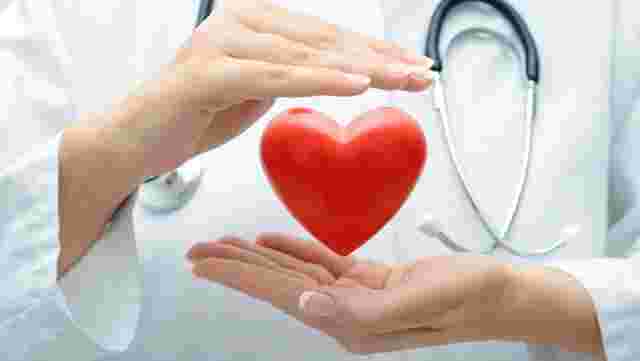How To Protect Yourself From Heart Attacks
02 Feb 2024 by Curtis Anderson in Ego, Excercise, Fitness, Fitness, General, Health, Health, Home, Pleasure, Power

The heart is the best organ. It is simple, yet complex. Independent, yet reliant. Resilient, yet fragile. If your heart stops beating, your brain dies in a matter of minutes. Were you to lose your brain, your heart would keep on beating for up to several days.
But hearts do have flaws. One flaw is that the heart needs blood to continue to beat. In fact, of the blood the heart pumps out, 5% goes right to the heart to keep it pumping. And your heart really needs oxygen. Without oxygen, the heart tries to keep on beating, and in doing so damages or kills its own cells. This is myocardial infarction (MI), commonly known as a heart attack. It affects almost (1 million people) a year in the United States). If survived, it can lead to heart failure, arrythmias, and worsening quality of life.
Why we have heart attacks.
Your coronary arteries are the arteries that supply your heart with blood. They are also what gets clogged off in a heart attack. We call this coronary artery disease. Most of these flow issues are because coronary arteries have built up plaque, narrowing the artery, and eventually getting to the point where blood flow is impaired. Coronary heart disease impacts overall quality of life and is possibly life ending.
Everybody has some tendency to build up plaque, but our specific body’s proclivity towards plaque is primarily influenced by three things.
- Genetics
- Activity level
- Diet
How to know if you are having a heart attack.
There are some typical symptoms like chest pain, rapid heartbeat, and shortness of breath that are universal signs of a heart attack. However, some symptoms can be misdiagnosed or explained away. Women and people over the age of 65, are more likely to experience what are referred to as “atypical” heart attack symptoms.
Atypical symptoms can include:
- Pain in your neck, jaw, arms, or shoulder blade
- Fainting,
- Extreme Fatigue
- Nasua and vomiting
- Gastral intestinal issues
- Light headedness
- Body aches
- Sweating
- Swelling of your feet and legs
Some of these symptoms can come along with chest pain, but not always. The more we can recognize these “atypical” symptoms and screen for them earlier, the better we can prevent a heart attack or catch it early. The best advice I can give is, if something feels or appears irregular, trust your instincts, and see your doctor.  Reducing your risk of heart attack
Reducing your risk of heart attack
The best treatment for a heart attack is to never have one. Unfortunately, you can’t change genetics. If your parents, grandparents, eccentric uncle, annoying cousin, or anyone else in your family had a heart attack, that makes you more likely to have one as well. Let’s move on to what we can change.
There is nothing groundbreaking about advocating for improving your diet and increasing your activity. We continue to bang the drum because there is absolutely nothing more effective in the fight against heart disease.
The American Heart Association recommends 150 minutes of moderate activity, or 75 minutes of vigorous activity, per week. As for what you choose to do for this activity, it does not really matter. You can bike, run, lift weights, canoe, underwater basket weave, army crawl across a field of broken glass or play pickleball (this list is ranked in terms of my personal preference). The important thing is to do something active regularly.
Now, let’s talk about diet. If I had one piece of advice I would say “stop buying things that say low fat, you want HEALTHY fat.” What are healthy fats and what should you eat? Foods that have unsaturated fat, especially something called monounsaturated fat. Some excellent foods include:
- Avocados (Some even have their own catchy jingle)
- Most nuts, such peanuts, cashews, pecans, or almonds. Their respective butters also carry these fats, although not as well and watch for added sugar.
- Seeds, such as sesame or sunflower seeds
- Olive oil. It can be expensive but way less expensive than a bypass surgery. I highly recommend olive oil over bypass surgery.
But not all fats are created equal. Saturated fats are much worse for you and can be found in butter, meats, pastries and in most other foods that make life enjoyable. These fats raise your LDLs and lower your HDLs. This is an unfortunate fact of life so enjoy these foods SPARINGLY. Cutting them out altogether is generally a poor choice. Instead, replace these foods with fats that are good for you.
If you are concerned about your heart health or don’t know your risk, visit your healthcare provider. They can recommend changes to help reduce your heart attack risk. As with most things in life, it is little choices and actions we take that make the biggest difference. Make one more healthy decision today than you made yesterday. Sometimes, that is all it takes to set you on a better way and protect your heart.
Curtis Anderson is a fulltime faculty member, at Arizona College of Nursing. Anderson started his nursing career as a bedside nurse, primarily working with cardiac patients. He is a passionate educator who believes training future nurses truly is changing the world, one student and one person at a time. Anderson and his wife are expecting their first child!









